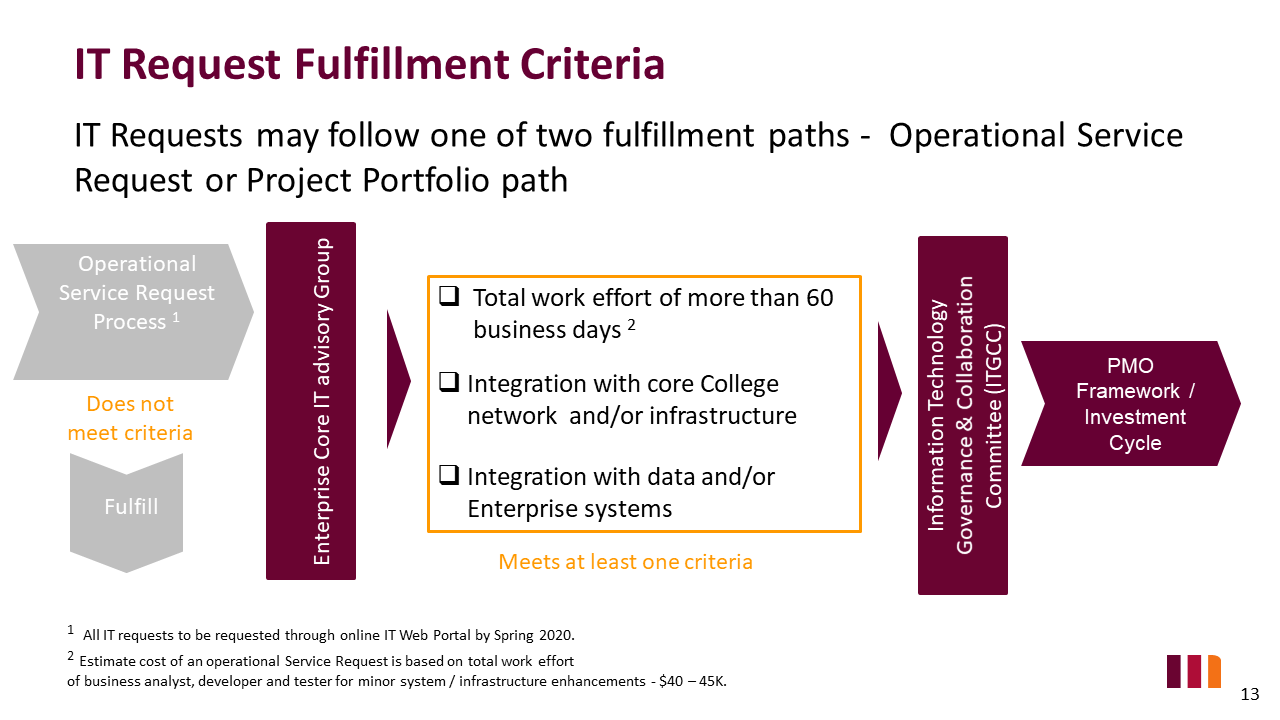Information Technology Governance & Collaboration Committee (ITGCC)
Members
Chair: Chief Information Officer
Participants: C-levels, Deans, Registrar, faculty and student reps, selected Directors, Core IT Executives
Inputs
Business/IT: Evaluate IT requests, operational intake record
IT: Review new or material changes to IT Strategy, standards, policy, architecture
Outputs
Evaluate priority, alignment, approve investment proposal
Determine whether project or operations delivery path
Approve new or material changes to IT strategy, standards, policy, and architectures
Frequency
Quarterly or as needed
Advisory IT Groups
Members
Chair: Director / Manager (can be business-led where it makes sense)
Participants: Subject Matter Experts, Directors, Managers, Faculty Reps, Selected IT Managers and Specialists
Inputs
Business/IT: Intake of ideas, concepts, business requirements
IT: Introduce new or material changes to IT Strategy, standards, policy, architecture
Outputs
Evaluate priority, strategic alignment.
Determine project or operations delivery paths.
IT requests, operational intake record.
Frequency
Bi-monthly or as needed.



